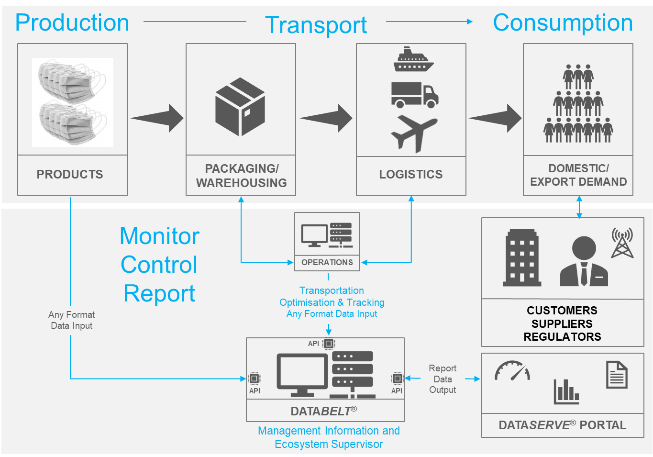A federal logistics policy for joining up all aspects of national supply chains and driving sustainability depended upon new technology. Aim’s dataBelt® platform was central to the solution!
Situation
A federal logistics policy recognised the importance of logistics in the future growth of a national economy. The aim was to look at all aspects of logistics and how logistics can be better co-ordinated, organised and use technology to become smarter. Logistics was seen not just as an enabler of significant economic growth (domestic and exports) over the next 5 years but also as an investment in people, training, skills and standards of living.
The use of new technology would be key to success of the logistics policy given the need to join up all aspects of supply chains.
Solution
Aim proposed its data governance platform dataBelt® to deliver the central role in the solution as a formidable management information and ecosystem supervisor which monitored, controlled and reported on end-to-end logistics processes, and drove supply chain process efficiencies through data analysis. This ranged from optimising freight carbon footprint, identifying supply chain streamlining opportunities, to assessing the efficiency of warehouse drones and logistics counter-fraud.

Aligned with the Supply Chain Operations Reference Model, the AI-powered platform with its virtualised data lake supported all aspects and teams in the supply chain – suppliers, freight forwarders, port agents, warehouses, shipping, road transport, regulators/customs, customers.
Aim’s dataServe® provided the next generation agnostic web portal, customised to meet the needs of logistics organisations with a full range of API adapters and operators to ensure connectivity to any system. DataServe® provided a single ‘go-to’ place for services, resources and information for all supply chain stakeholders.
Results
The overall solution enabled the policy to be enacted and delivered a range of benefits including:
- Development of new business models and revenue streams to support growth;
- Sensible centralisation and localisation best fit logistic solutions for delivering the policy;
- Human resources and skills investment;
- Optimisation of supply chain, driving greater sustainability and reducing carbon footprint;
- New AI-enabled technologies to aid innovation, system integration and data sharing to improve understanding and logistical efficiencies;
- Compliance, SMART metrics, benchmarking and dashboards to monitor, analyse and report on progress – development of a Logistics Data and Analytics Centre;
- Logistics document management and digitisation; and
- Logistics risk management and counter-fraud.

